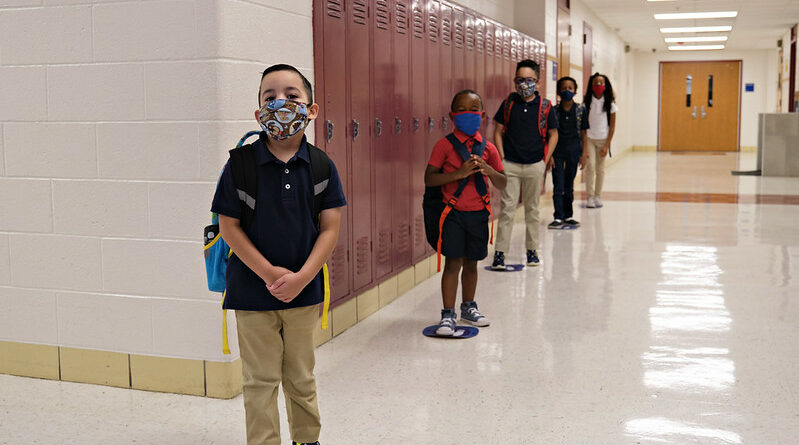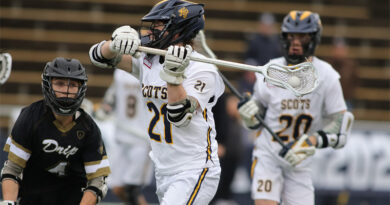What Happens if COVID Strikes Your Classroom?
Dallas ISD began welcoming its youngest students at each campus on Monday, but some parents are already questioning whether the measures the district has in place for mitigating any potential spread are enough.
In a memo sent to schools on Sept. 17, Dallas ISD Chief of School Leadership Jolee Healey outlined what it would look like if a student or staff on campus was diagnosed with COVID-19.
In the memo, Healey outlined a seven-step plan for contact tracing that largely hews to the guidance the Centers for Disease Control and Prevention has provided. It is also similar to the contact tracing plan in Highland Park ISD’s playbook.
Both districts require self-screening by staff and teachers before they come to work. At Dallas ISD, students are to get a temperature check before boarding the school bus or entering the building. Masks are required for all students at Dallas ISD, but not for pre-K students at Highland Park ISD.
Under Dallas ISD’s plan, any student or staff member who begins feeling ill will report to the school nurse, who will go through a screening checklist and isolate the sick person. If it is a student, a parent will be called for pickup. The principal is notified, as well as the campus COVID-19 response team. The nurse reports the case to the county, and the principal provides the nurse with a seating chart for the class, for contact tracing purposes.
Classmates of that student will be relocated temporarily while their class is thoroughly cleaned.
If the case is confirmed, a notification is sent to anyone identified as being within six feet of the sick student or staffer for more than 15 minutes two or more days before symptoms develop, or two days prior to a positive test – even if everyone was wearing a mask. Those students and teachers will be required to quarantine for 14 days, utilizing distance learning in the meantime.
Students and staff who test positive can return as soon as 10 days have passed since the onset of the symptoms or the positive test result, they haven’t had a fever in 24 hours (without fever reducer), and symptoms have improved.
The district also says that short-term closures for 24 hours might be required in some cases to engage in adequate contact tracing. The district may also at times need to close an entire school for 14 days if there is a widespread outbreak.
But at last week’s school board meeting, teachers and parents wondered if that was enough.
“Your employees are troubled; we’re in fear for our lives,” said Kevin Hopper, who identified himself as a district teacher. Hopper said that since teachers returned to campus on Sept. 17, they’ve “been confronted with dozens of violations of safety protocols.”
Parents and grandparents said they worried that cleaning efforts between the times one cohort leaves and another enters – for schools using a hybrid model – were not stringent enough. Another says she is worried that the district isn’t being transparent enough about what it will consider close contact between an infected student and other classmates and their teachers.
Christina Childress, who is a co-founder of the Parent Advocates for Children and Teachers, said that she continues to hear from parents and teachers that are confused and unclear on the district’s protocols.
“It makes me wonder why not even our teachers know the answers to these questions with students returning to classroom in a few days,” she said.
“What we’ve heard so far is that only students and teachers who have been in direct contact for more than 15 minutes will be notified which, quite frankly, is not the level of transparency required in this situation,” Childress continued. “Every staff member and parent needs to know how many positive cases there are on their campus to make an informed decision about whether it’s safe for them to return in person.”
Others said that they worried that safety guidelines and social distancing weren’t robust enough for bus drivers and monitors.
A community member asked why the district doesn’t have proper safety guidelines for those tasked with bringing students to and from school, adding that there is social distancing for bus drivers and monitors. The situation disproportionately affects black employees, he said.
“Is the district going to take care of my funeral arrangements?” a grandmother asked, saying she is comfortable with the precautions her family is taking but is not so sure that her grandchildren’s classmates are doing the same.
Last week, Dallas ISD rolled out a new tracking dashboard, and Highland Park ISD also offers one. However, neither district provides numbers on how many students are in quarantine because they came into contact with a student or teacher that tested positive.
According to those trackers, Dallas ISD has 16 total cases in the district so far, with the majority being staff (there are seven student cases), as of Monday.
Highland Park ISD, who has offered on-campus instruction for a longer period of time, is reporting a total of 35 cases, with the bulk being Highland Park High School students at 25 cases. Of those cases, 10 students and two staff members have been deemed well enough to return to their campuses.
School Safety and Contact Tracing (1) by PeopleNewspapersDallas on Scribd
HP repoen by PeopleNewspapersDallas on Scribd









